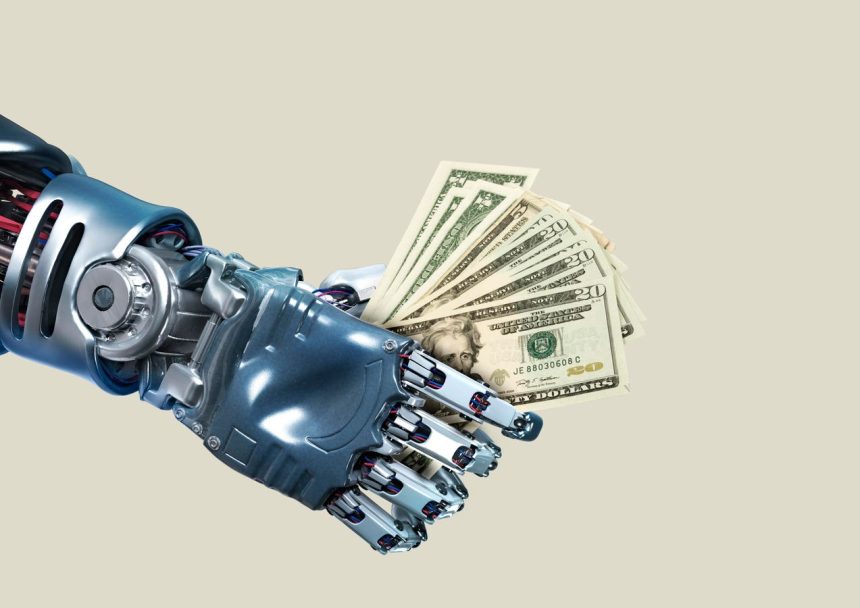At the start of the digital revolution, Bill Gates said that “banking is necessary; banks are not.” That was back in 1994. After 30 years of digital change disrupting dozens of industries, it’s not clear that he was right.
The biggest changes in banking to date focus much more on “how” than “what.” Customers interact with banks way more often now than in the pre-digital days, but those interactions mostly consist of checking balances and moving money between accounts. It’s been 25 years since the start of the dotcom boom and not a single digital-only bank has truly hit scale as the traditional banks remain dominate.
This has created, in some circles, a hunger for the next big thing that will truly disrupt banking.
Generative AI may be the most disruptive technology the banking industry has seen in 30 years and I believe it will radically change the way banking is delivered; however, I don’t believe it will fundamentally change the basics of banking – collecting and safeguarding deposits and lending money.
It will, I think, change everything else.
The revenue opportunity for banks
Most banks think generative AI is a cost-takeout play, but the revenue upside could be the real story here. Nearly every bank role will be transformed in some way and the impact to bottom lines could be eye-popping. A new Accenture study modeled the impact on the banking industry and found that generative AI could provide a significant boost.
And there are hundreds of potential use cases and applications. In risk management, generative AI is already transforming anti-money laundering and know your customer practices. Its coding applications are some of the most exciting and range from the ability to reverse engineer decades of spaghetti COBOL code to developing new digital customer experiences at unprecedented speeds.
Generative AI’s uses in customer service are just as exciting and far-reaching. The technology has the potential to raise the bar for personalization, while helping reps solve customer inquiries faster.
But I believe the real power will be in augmenting workers. For example, imagine a relationship manager who, during a client conversation, can look at a navigation map-like guide. If the conversation is “red,” with the customer showing signs of disinterest, the system could provide them with a detour and prevent them from heading down dead ends and detours in the conversation.
It’s instructive to compare the immediate impact of generative AI with other recent technologies. When blockchain and the metaverse emerged, there was much discussion about how the technologies could change banking. With gen AI, we’ve already seen banks come up with thousands of opportunities. The challenge isn’t what you do, it’s what you decide not to do, which reinforces my belief that this is a true paradigm shift.
It’s like going from the slide rule to the calculator. In fact, a majority of banking leaders (71%) point to generative AI as a key lever in their continuous reinvention strategy, according to a recent Accenture study, and two-thirds (66%) see the technology as more of an opportunity than a threat.
The last year has seen staggering adoption and advancements in maturity, with banks moving beyond proof of concepts to use cases. Not surprisingly, banks that have already invested in AI and analytics previously, and that have strong digital cores, are leading the way on generative AI.
Perhaps the most disruptive thing about generative AI is that you don’t need to be a goliath or have 100 PhDs in AI or machine learning to take advantage of it. Thanks to cloud-based services, much of this tech can be purchased on a credit card. It just requires the right time and focus.
The next step in generative AI’s evolution at banks will be establishing the right infrastructure within the bank’s four walls. This includes building appropriate guardrails around security and risk and ensuring that AI models, systems and processes are responsible by design. Model risk management will be critical as large language models proliferate and as banks customize existing models or in some cases build their own.
Reinvent talent and ways of working
Because generative AI will impact nearly every part of the bank, it will require banks to reinvent almost every process and role.
You can’t go out and hire someone with five years of generative AI experience. They don’t exist. Therefore, you need a culture that embraces a willingness to change to take advantage of and scale the technology. If your culture is one with a rear-view mirror approach, you will be benchmarking yourself against what competitors were doing years ago and never looking forward.
The very nature of talent and bank roles could change dramatically. Banks will need to consider how their talent moves around in different ways across the bank and embrace skills-based HR.
While generative AI is unlikely to disrupt banking, there is good reason to believe it will be a driving force for continuous reinvention, making banking infinitely more meaningful for employees, customers and investors. For staff bogged down with process-orientated work, generative AI can handle the mundane, freeing up more of their time to help customers. For the end customer, it means a faster, more personalized and seamless experience from their bank.
Read the full article here
















